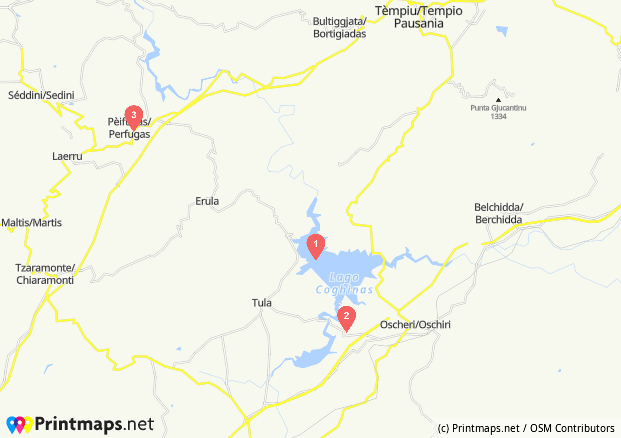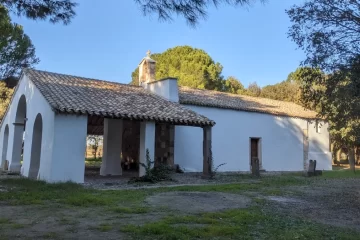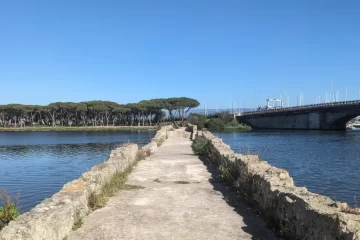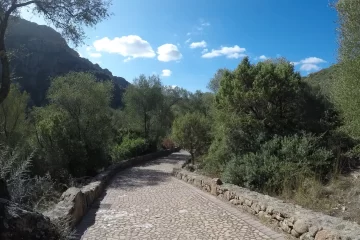Let’s start now a journey to discover one of the main Sardinian rivers: the Coghinas. Only Tirso and Flumendosa are longer.
This river has the springs on the Buddusò plateau, even if it takes the name Coghinas only in the lower part, under the homonymous lake; the basin receives waters by many torrents and the main one is the Rio Mannu of Berchidda.
We will soon discover that the Coghinas is an excellent travel companion… It reaches places of historical and naturalistic importance, crossing very different environments!
These places definitely deserve a visit, maybe during more days… There are many things to see and, not surprisingly, we took our photos in different trips and excursions.
Coghinas Lake
Let’s start with our explorations right from the Coghinas lake, easily accessible from the Olbia–Sassari road. It is a large artificial basin, on the edge of the Chilivani plain, a vast plateau in the Monteacuto region.
The Muzzone dam that encloses the lake was built in 1926, to produce electricity; later, the waters were also used for irrigation of the fields.
Many mountains surround the plateau, the Limbara to the north-east and less steep groups in other directions. Here we found many kinds of vegetation: Mediterranean maquis, in addition to holm oaks and cork oaks.
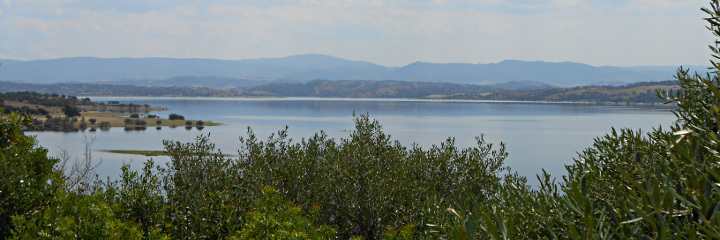
The area is certainly restful and well suited for excursions and relaxing holidays; even if there are not big towns, you can easily find hotels, restaurants and farmhouse accommodations.
To start getting to know this area, we drive following our instinct and curiosity; so, we find small roads, hunting for views of the lake…
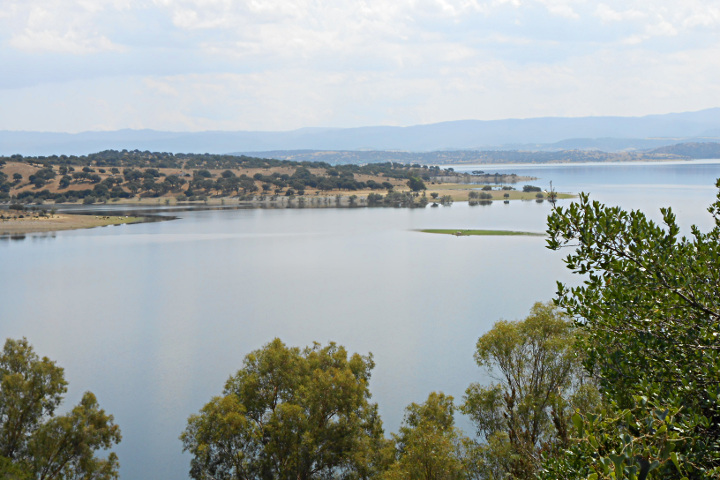
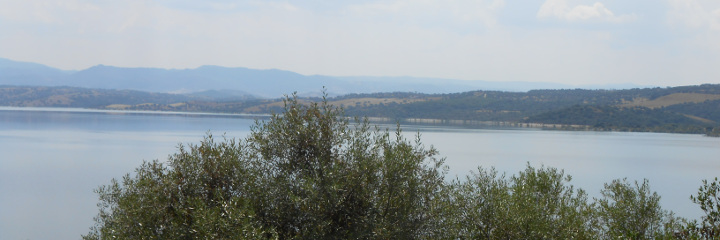
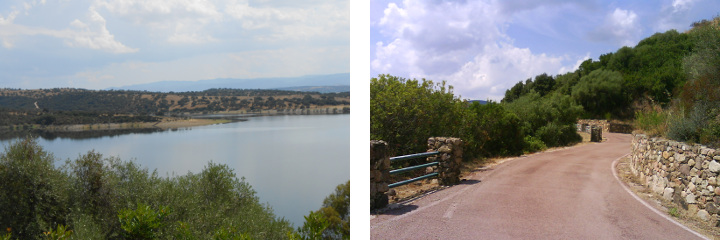
The church of Nostra Signora di Castro
The Church of Nostra Signora di Castro is located on the top of a hill, an excellent viewpoint, south of the lake. In particular, from here we can admire the Chilivani plain, a part of the lake and the surrounding mountains.
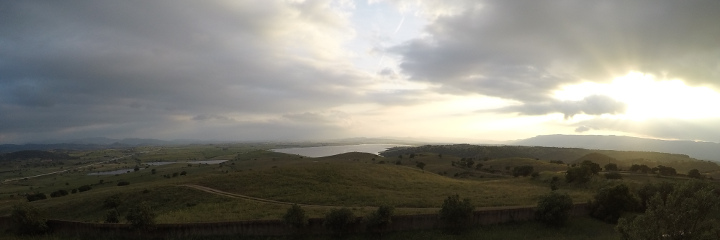
In the region of Monteacuto there are many rural churches of medieval origin, like this one. The building, in Romanesque style, dates back to the period of Judge Constantine II (1170-1198) and it was consecrated as a cathedral. The main part, in blocks of volcanic stone of different colors, has a single nave; the small hanging bell tower and the side portico were added later.
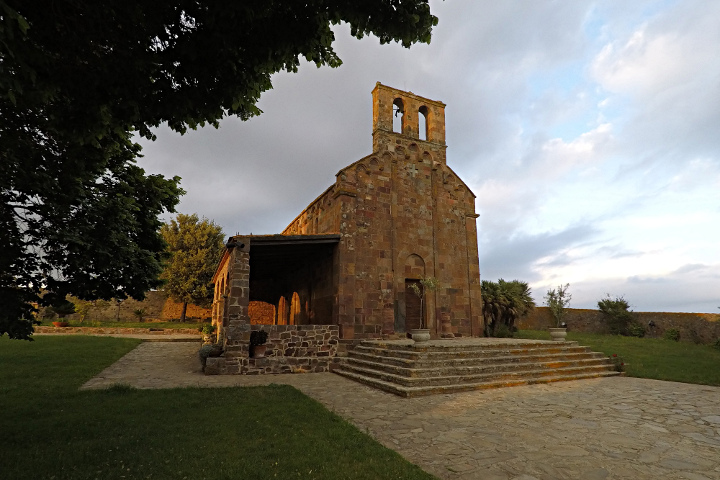
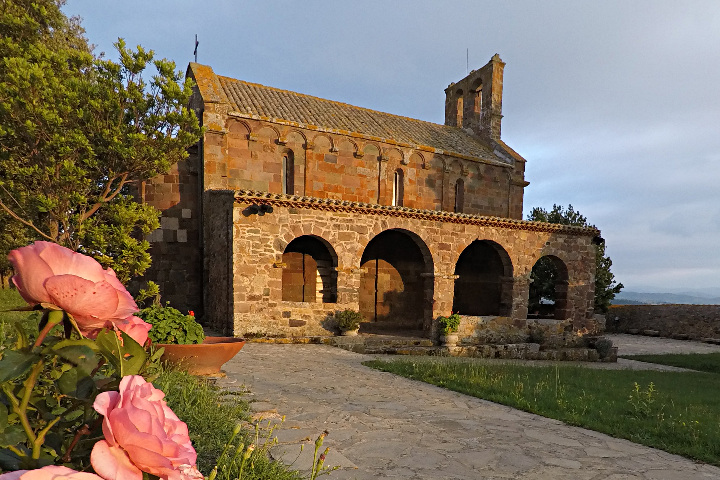
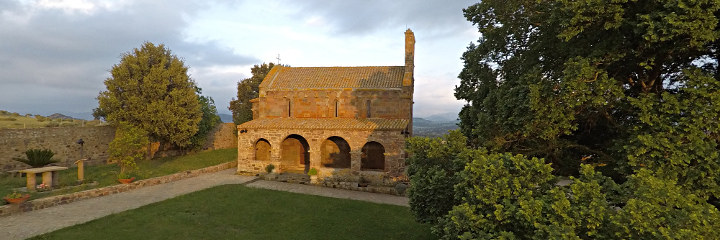
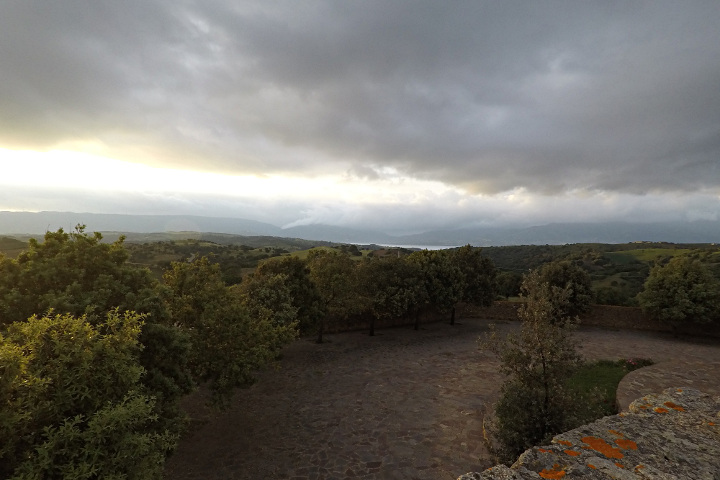
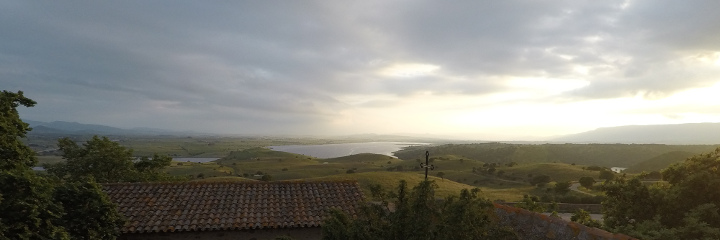
Leaving the lake
North of the lake and the dam, the Coghinas river descends into a narrow gorge at the base of the Limbara mountain range. In this part we can follow its path, at a distance, thanks to the curvaceous road that leads from Tula to Erula. So we leave the region of Monteacuto reaching a wide valley in Anglona, less extensive than the Chilivani plateau.
Here, the village of Perfugas is a wonderful destination, small in size but of great historical importance.
Perfugas, a dip in ancient times
The name Perfugas probably derives from a Latin word, that indicated a group of fugitives or refugees settled in this place. Surely the locality has ancient origins and there are testimonies of the human presence prior to the Roman period.
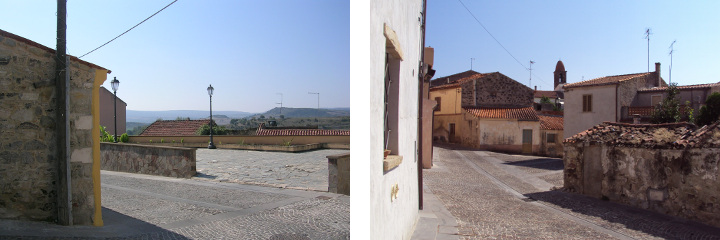
At the center of the village there is a an archaeological jewel: the sacred well. The building dates back to the Middle Nuragic period (1000-500 BC) and it was used as a place of worship of the waters.
This monument was discovered in 1923, but brought to light by the excavations in 1980. It is a white limestone construction, with three main parts; in particular there are a vestibule, a descending stairway and an underground well, inside which the water was gathered. The precision and mastery of the ancient builders is surprising, they assembled the stones to reproduce in the vault the steps of the staircase below.
Around the atrium, outside the well, there are also the remains of ancient seats; this was probably a place for the crowd that attended the religious ceremonies.

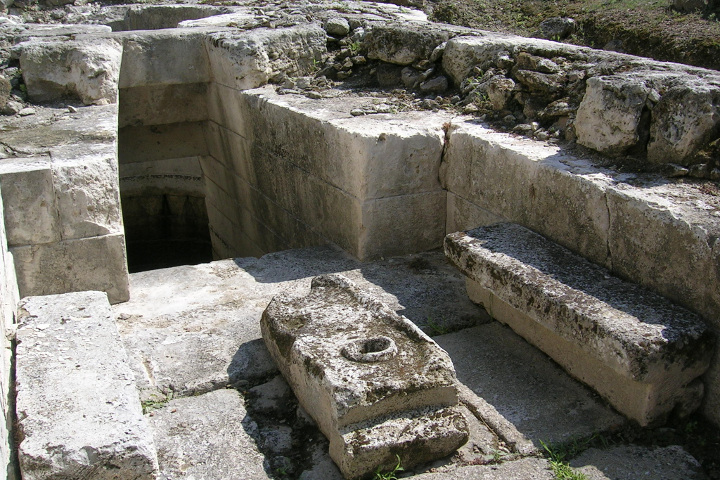
The visit of the sacred well is not free, but with a low-cost ticket it is possible to see the nearby parish church of Santa Maria degli Angeli and the Archaeological and Paleobotanical Museum.
The beautiful Church of Santa Maria contains the retablo of San Giorgio, a wooden altarpiece, painted in the XVI century according to Spanish traditions. This is the largest retablo in Sardinia!
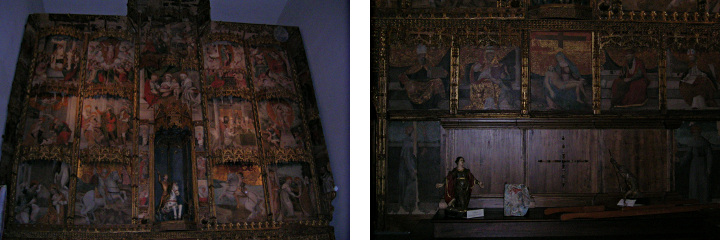
Finally, the Archaeological and Paleobotanical Museum contains archaeological evidence of the territory; there are findings of the Neolithic period, of the Nuraghic period, of the Roman period and also of the Middle Ages. Interesting remains of the ancient petrified forest of Anglona are also visible; these are ancient tree trunks, fossilized thanks to the action of natural elements.
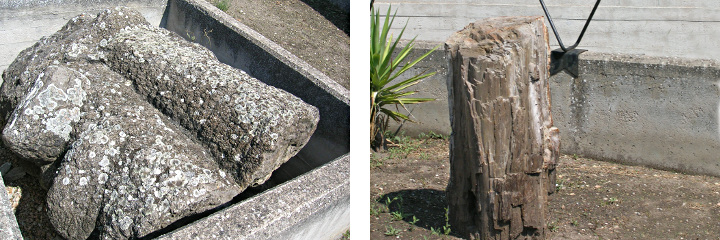
So the first part of our journey ends here; however, in the second part, we will discover the area of the low Valley of Coghinas.
